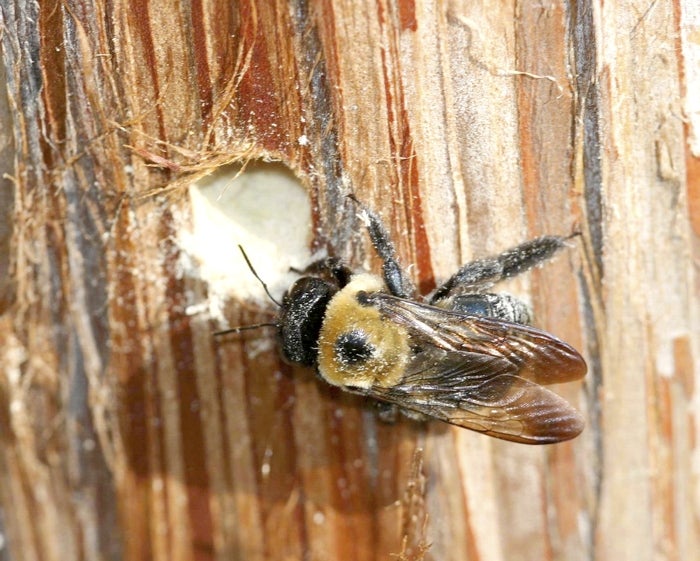Darrell Blackwelder: When blooms pop out, so do the weeds
Published 12:00 am Friday, April 10, 2015

- University of Georgia Carpenter bees often return to the nests they bored out the previous year.
Warm weather, coupled and ample rainfall, has produced many colorful blooms throughout the county. Many trees and shrubs are almost in full show. Unfortunately, many weeds are also beginning to grow and bloom. Below are a few questions posed to Cooperative Extension over the past few weeks that may be of interest.
Question: I noticed a lot of bumble bees that are buzzing around my parents’ home. Are these the carpenter type bumble bees? What can we do to stop them?
Answer: A few carpenter bees are starting to show up in all areas of Rowan County. The initial activity is often by males who are busy buzzing about looking for the lady bee of their dreams. The males are often territorial and will actually harass people sitting on wooden park benches or on their porches. There is really no pesticide that will give extended protection against these pests. Once these insects take up residence, they return each year to extend their family. There are two major problems dealing with carpenter bees: an effective chemical residue that endures throughout the entire period of bee activity, and the ability to apply any pesticide to all of the surfaces that need protection, particularly overhead on soffit and fascia boards.
Other than swatting the bees with a badminton racket, your next best option is to apply a pesticide into active tunnels and then seal up the hole. There are aerosol insecticides with a special spray tube designed to penetrate through curving tunnels. Go to http://www.ces.ncsu.edu/depts/ent/notes/Urban/carpenterbees.htm for more detailed information.
Question: My lawn has spots of violets along the edges. Even though they look very good, I’d like to try to have a weed-free lawn. What can I do to reduce them?
Answer: Wild violets can be either winter annuals or perennials that grow in clumps with rhizomes. Use lawn herbicides containing 2,4-D, triclopyr and banvel to reduce populations of this and other broadleaf weeds. This is not an easy weed to control, often requiring multiple sprays. Go to http://www.turffiles.ncsu.edu/weeds/Violet_Wild.aspx for more detailed information.
Question: I noticed at the Agriculture Center that a tree is planted that looks much like redbud but it is a weeping tree. Is it a weeping redbud?
Answer: Yes.It is a weeping redbud cultivar, Lavender Twist. It is now available at selected nurseries and garden centers. This grafted variety is from a tree that was discovered in the little town of Westfield, N.Y. Redbuds also come in different bloom colors, including white, as well as leaf textures and colors. For more information about redbuds, go to https://plants.ces.ncsu.edu/plants/all/cercis-canadensis/
Darrell Blackwelder is the County Extension Director with horticulture responsibilities with the North Carolina Cooperative Extension Service in Rowan County.




